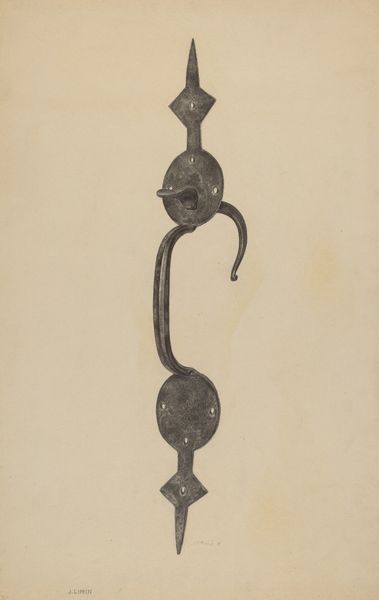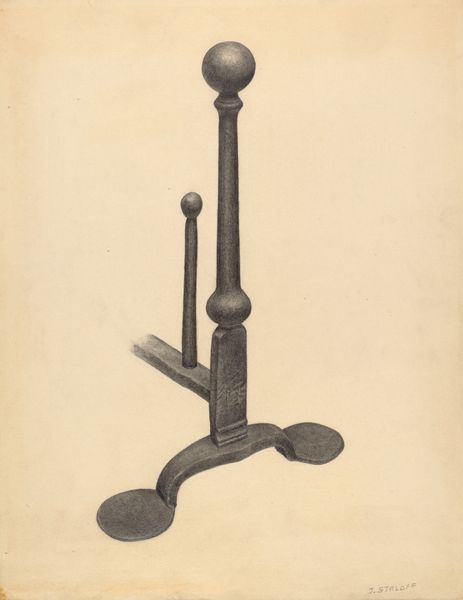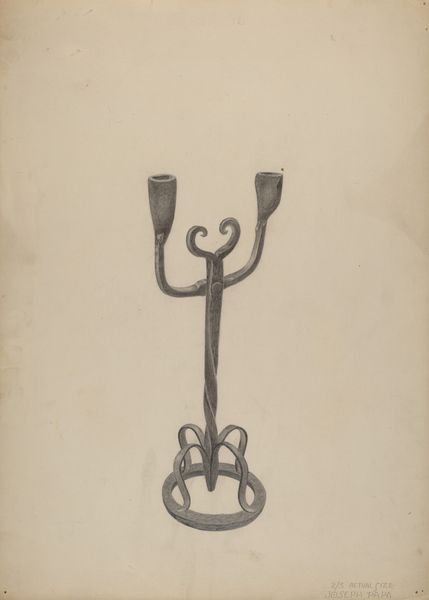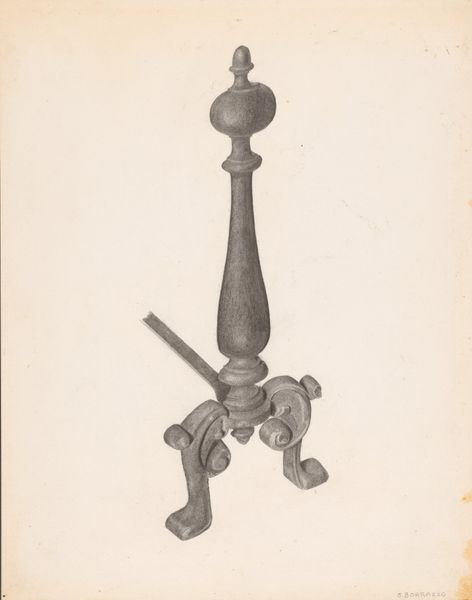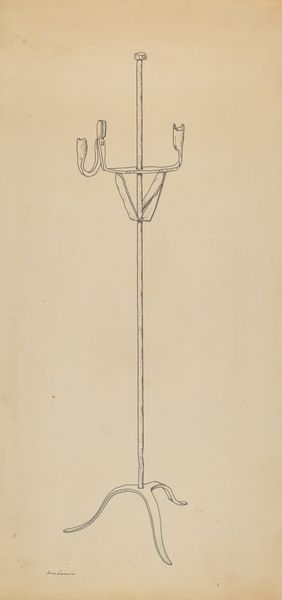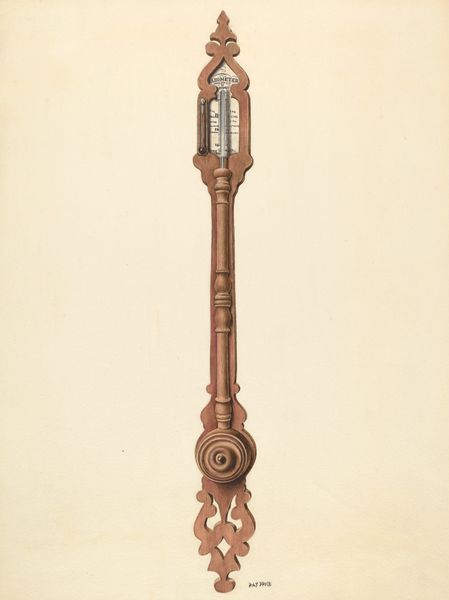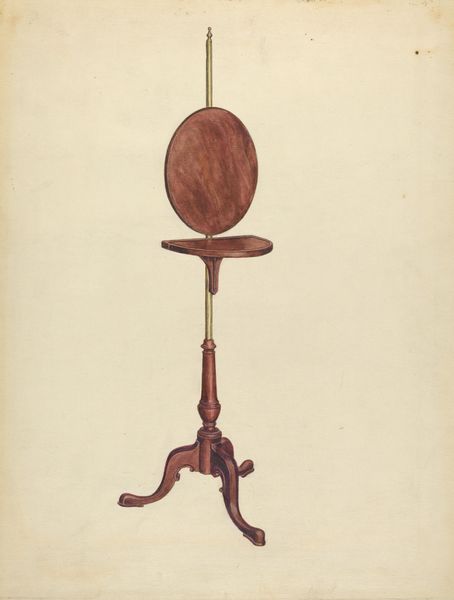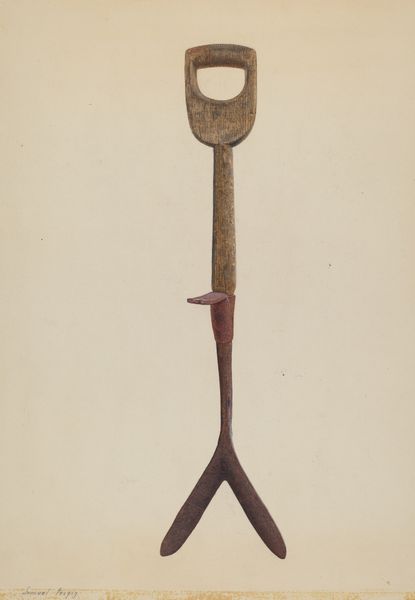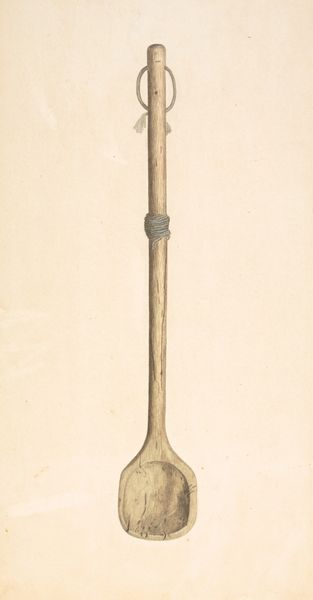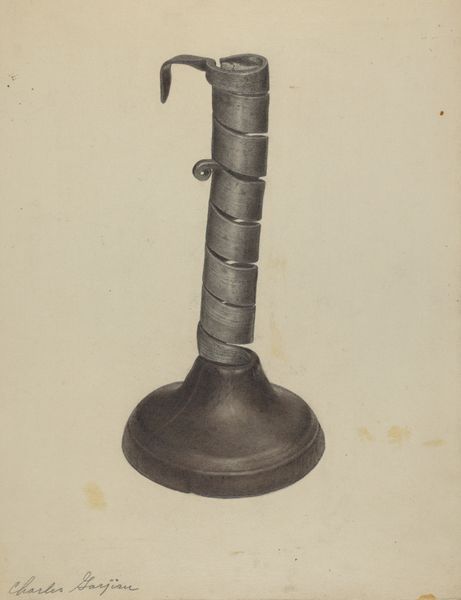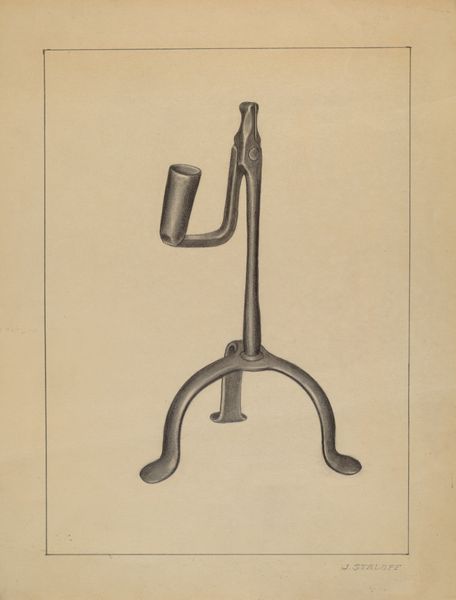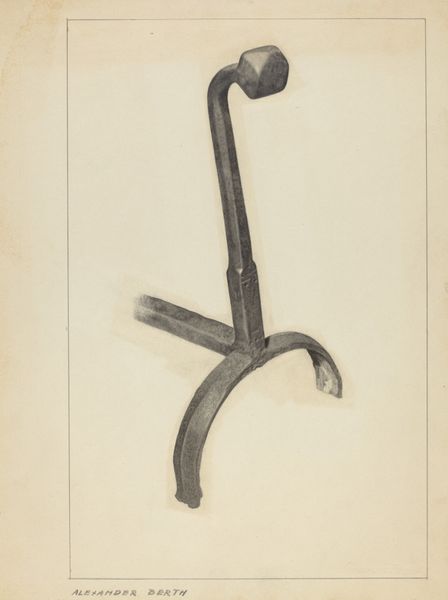
drawing, ink
#
drawing
#
ink
#
geometric
#
watercolor
Dimensions: overall: 34.1 x 16.5 cm (13 7/16 x 6 1/2 in.)
Copyright: National Gallery of Art: CC0 1.0
Curator: Welcome. Today, we'll be looking at "Iron Fork," an ink drawing likely created around 1937 by Frank Eiseman. Editor: It's striking. I immediately see a totem, a stylized representation of a tool transformed into something almost ceremonial. It exudes an unsettling sense of... primitive modernity? Curator: Note the balanced symmetry and carefully calibrated proportions. The fork's tines mirror the curvature of the handle’s upper aperture, creating a self-contained visual echo. Observe how the slender stem connects these two elements—a structural spine lending visual integrity. Editor: And within the handle, that curious triad—it calls to mind archaic symbols, fertility figures perhaps, abstracted to near-geometric simplicity. Or are they stylized human faces, gazing outwards, invoking a sense of connection, or a protective spirit. Curator: Interesting. I perceive those forms less as explicit symbolism and more as a rhythmic interplay of negative space. See how the artist contrasts solid form with void? These apertures interrupt the surface, introducing visual complexity, a dialectic between object and absence. Editor: Precisely. It's that tension between practical tool and sacred object that captures me. Imagine it, a ritual implement from a lost tribe, or a design of an industrial age attempting to reconcile nature with machine. There’s something compellingly cryptic about it. It embodies a visual narrative waiting to be deciphered. Curator: Whether a functional object elevated or an iconic artifact deconstructed, Eiseman's composition offers a study in form. Editor: A silent conversation, spoken in the language of images.
Comments
No comments
Be the first to comment and join the conversation on the ultimate creative platform.
